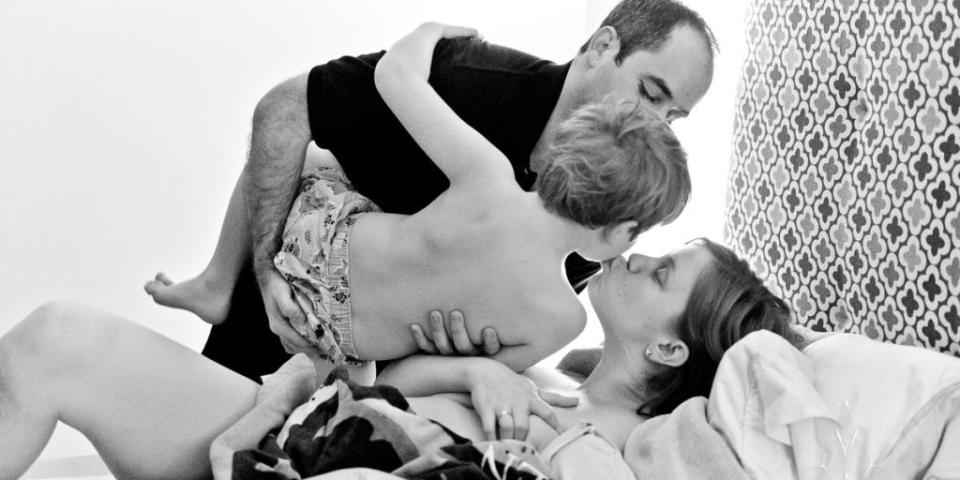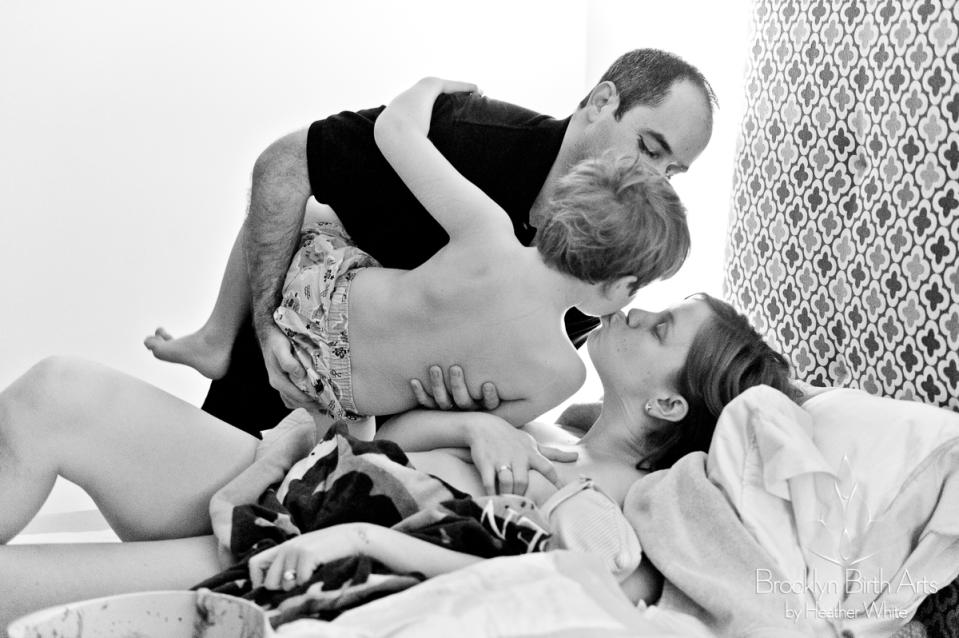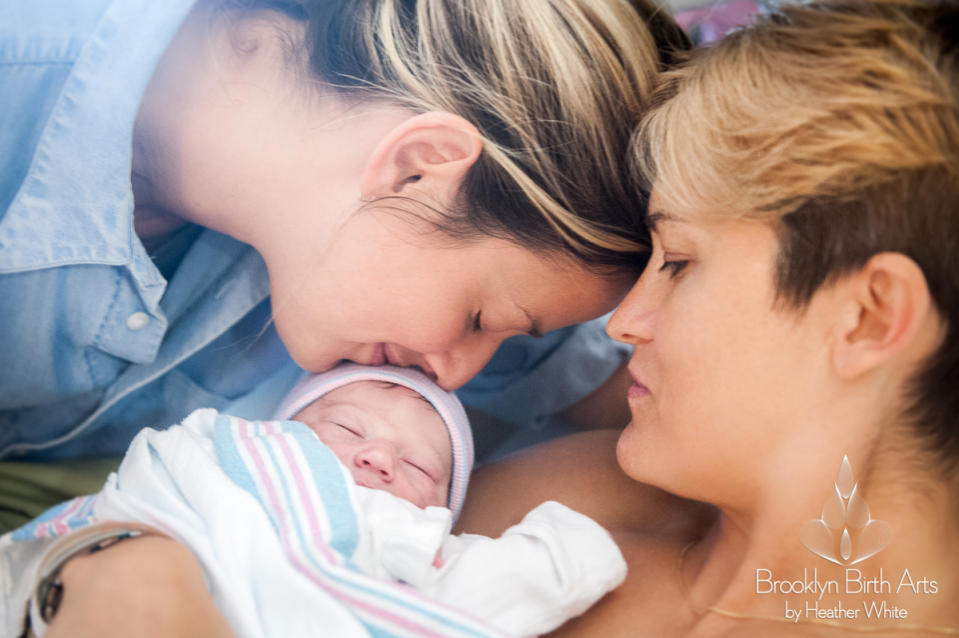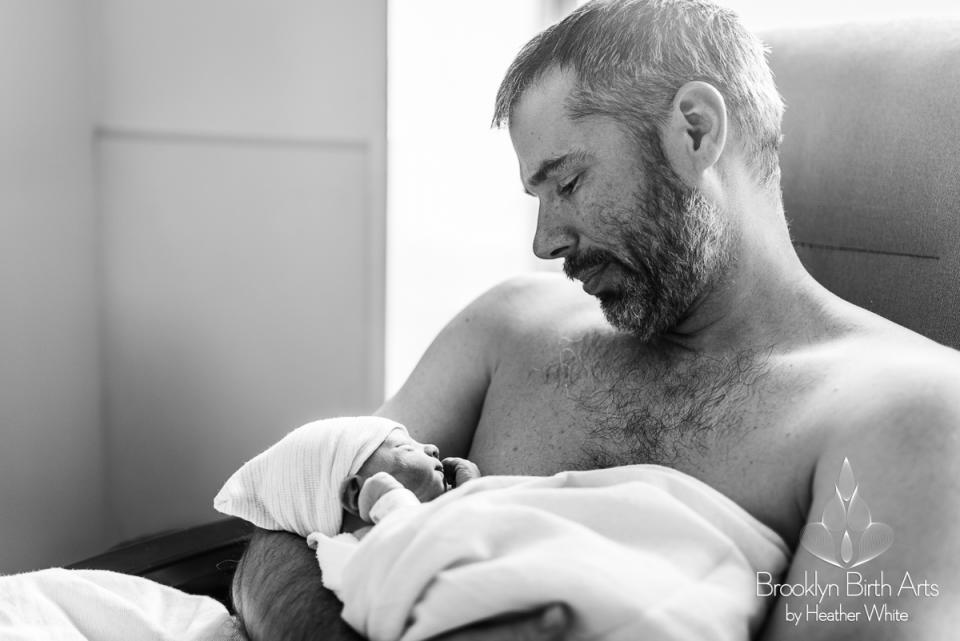What It's Really Like to Be a Birth Photographer

I've photographed about 135 births in the 5 years since I become a birth photographer, but it took me some time to get here. I used to do documentary-style photography and some freelance editorial work for magazines, like New York magazine and Time Out New York. I live in New York City, a city filled with unbelievable talent, and it was hard to figure out how to stand out as an artist. I felt like I never really found my niche - until I became a mom.
It wasn't exactly a happy coincidence: I gave birth in 2009 to baby that ended up not surviving. It was a tragic and traumatic event, considering I had a healthy pregnancy and a normal, healthy delivery. I gave birth at home in my apartment, with a midwife who was a nurse. I had a plan in place. My baby was full-term, but he was positioned awkwardly, which made him hard to push out - and I pushed for hours. He had a heartbeat shortly before I delivered him, so I was expecting a healthy, normal baby, but when he was on my chest, he never took his first breath. It was just some tragic, freak occurrence; nobody knows why it happened. It went from the happiest moment in my life to the absolute worst. We rushed to the hospital, but he was pronounced dead.

After 7 months and gallons of tears cried, I wound up pregnant with my daughter. I delivered her in 2010, and became inspired to learn all that I could to help women through their toughest moments during their deliveries, so I became a doula. Learning about birth work really helped me through my trauma, too. And then it became easy to figure out that my artistic calling was to be a birth photographer: I want to celebrate and document that life-changing moment.
That's what this job is about: capturing the first moment someone comes into the world. There's nothing more magical than when a mom and her partner meet their child, knowing that this person will be in their lives forever, and they're going to love and care for it.
But the job isn't easy. From week 37 until week 42 of a woman's pregnancy, I'm on call. I always have to have my phone attached to me because I never when a client is going to deliver - but that's the exciting part for me. Sometimes I have to drop everything and speed to the delivery to make sure I don't miss a moment; sometimes that's in the middle of the night. And babies don't care what weather it is; even if there's a snowstorm, I have to prepared to run. I always have to have my bags packed and ready, my gear ready, my camera loaded, my batteries charged. I have to have contingency plans and make sure someone is available to care for my kids. My partner is extremely helpful and he, really, is what makes having this job possible. But if he's at work, I have to figure out how I can get out the door the quickest - so I have to call up a neighbor.

When expecting parents are interested in hiring me, I meet with them before the birth, of course, so that they're comfortable with me in the room with them. It's so important that the parents know what they're singing up for. And, usually, it's not the parents that are uncomfortable with my presence - it's the other people in the room, as most of my births are at hospitals, where there are often a lot of nurses, techs, and so on. I always ask the parents to clear it with their care providers early on.
I don't want anyone feeling uncomfortable with me being there; some doctors even get intimidated when they see a professional photographer with their equipment in the delivery room, so I have to adapt. Some ask me to make sure I don't get their faces in the photos, so I have to be aware of my angles. But most doctors are fine. Some births take place at people's homes, and I tend to start off the process by documenting all the sweet moments preceding the birth - like a partner rubbing the mom's back, giving her water, and other shots like that.
As for the actual delivery, I often lift my camera from a high angle and shoot down, so I have a lot of photos of babies crowning and coming out. A lot of women want to see that, the awesome power of nature and their body. I often joke with my friends that I'm New York City's leading vagina photographer that's not shooting porn.
It is a very personal experience, though. I respect that privacy. I do my editing in a co-working place, but I sneak in at night when no on else is around so I can edit the most private photos without anyone else seeing them.

Sadly, it can sometimes seem like people have a knee-jerk reaction to birth photography that's along the lines of "ew, gross, why would anyone want to document it?!" But they don't understand that the photos I'm taking are not being their graphic nature - they're about the celebration of new life coming into the world. I'm documenting the moment that two partners become a family.

The real value of these photos, in my opinion, is not necessarily apparent now, but it will be 20 years from now, when a mom can share them with her daughter or son and tell them their story of entry into the world, and the child can say, "Mom, look how beautiful you were."
Some women who've had birth photos taken have told me that these photos are more special to them than their wedding photos are. After all, giving birth is the best thing in the world. I couldn't think of a happier event to document.

Follow Redbook on Facebook.
You Might Also Like

